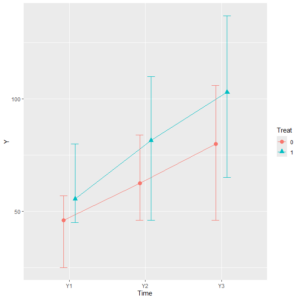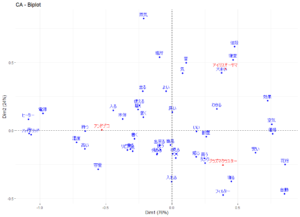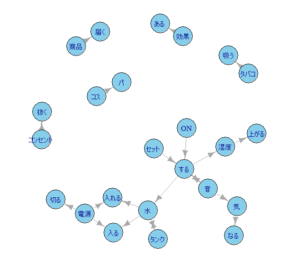多重代入法で欠損値を補完した後に Cox 回帰の Wald 検定を統合する方法
多重代入法
多重代入法とは、欠損値を、取得されている変数から推測して、いくつかの値で補完して、いくつかのデータセットを作成し、解析したのち、結果を統合する方法
詳しくは、こちらも参照のこと

Cox 回帰の Wald 検定の統合
Cox 回帰の 3 値以上カテゴリを有するカテゴリカルデータのパラメータの検定には、Wald 検定という、カイ二乗値を用いた検定が使われる
この検定の統合方法を紹介する
サンプルスクリプト
以下のスクリプトの流れを紹介すると、以下のようになる
- データを読み込む
- 多重代入する
- Cox 回帰を行う
- Wald のカイ二乗値を取り出す
- Wald のカイ二乗値を統合して結果を得る
実際のスクリプトは以下のとおり
読み込んだデータセット名、cph 関数内の変数名、説明変数の数の分だけ anova.values という結果格納オブジェクトを増やして、スクリプトも加筆すると、同じように計算できる
# load sample data データ読み込み
load("C:/Users/touke/OneDrive/R_Datasets/lung_rev.RData")
df <- lung_rev
summary(df)
# imputation 多重代入
library(mice)
df_imputed <- mice(df, seed=0)
df_imputed
# Initialize a list to store the results 結果格納オブジェクトの初期化
anova.values1 <- list()
anova.values2 <- list()
# Cox model using cph in rms; rms パッケージの cph 関数を使った Cox 回帰を実施
# Loop through numbers 1 to 5; 代入データセット 1 から 5 をループ処理
library(rms)
for (i in 1:5) {
# Complete the data with imputation number i
df_imp <- complete(df_imputed, i)
# Fit the Cox proportional hazards model
cph_imp <- with(df_imp, cph(Surv(time, status01) ~ ph.ecog012 + meal.cal))
# Perform ANOVA and store the result in the list
anova_result1 <- anova(cph_imp)[1]
anova_result2 <- anova(cph_imp)[2]
anova.values1[[i]] <- anova_result1
anova.values2[[i]] <- anova_result2
}
# Combine the ANOVA results into a single vector; Wald 検定の結果を結合
anova_values1 <- unlist(anova.values1)
anova_values2 <- unlist(anova.values2)
# Display the combined ANOVA results; Wald 検定の結果を表示
anova_values1
anova_values2
# Pool chi-squares カイ二乗値の統合
library(miceadds)
micombine.chisquare(anova_values1, df=2)
micombine.chisquare(anova_values2, df=1)
結合したカイ二乗値は、以下のとおりになる

統合した結果は、以下のとおり

説明変数 1 番目の ph.ecog012 は、統計学的に有意である
2 番目の meal.cal は統計学的有意ではなかった
まとめ
R において、mice で多重代入したのち、Cox 回帰の Wald 検定を統合したいときのスクリプトを紹介した
rms パッケージの cph 関数と、miceadds パッケージの micobine.chisquare 関数を使うと実行できる
途中、for loop を使って、多重代入セットを効率よく処理する必要がある
何らか参考になれば幸い
参考サイト
https://bookdown.org/mwheymans/bookmi/pooling-methods-for-categorical-variables.html







コメント